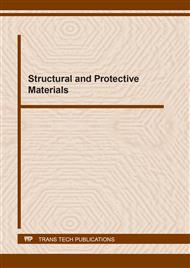p.47
p.53
p.61
p.67
p.73
p.79
p.85
p.91
p.97
Manufacturing of Complex-Shape PM Products Consisting of Several Powder Elements
Abstract:
The article’s primary purpose is to give a technological assessment of manufacturing complex-shaped parts using powder metallurgy. The process is considered in the example of a complex-shaped product consisting of several elements manufactured separately from the Fe-C-Cu powder mixture and then combined into a single structure. The joining was carried out by impregnation of porous structural elements with the fusion of copper-containing material. It has been demonstrated that the infiltration process is affected by many factors: porosity of structural elements, wettability of their pore channels, fluid flowability of the infiltrating material, and other factors. The research was carried out on the mass products - centrifugal pump stages for oil production. The elements compaction was carried out on hydraulic press at a pressure of 500 MPa, which ensured the average density of the parts after sintering up to 7.8-8.4 g/cm3. During sintering and impregnation, various types of defects of the pieces were detected, which were caused by the excessive thickness of the infiltrating material, different densities of the walls, and insufficient wettability in the connection zones of the elements.The investigations have shown that manufacturing complex components by prefabricating single elements and their subsequent sintering combined with infiltration is feasible. It can be done in a chamber furnace as well as with belt sintering. However, it is necessary to carefully prepare the mold before sintering, choose the infiltrating agent, and analyse possible disadvantages.
Info:
Periodical:
Pages:
73-78
Citation:
Online since:
April 2022
Authors:
Price:
Сopyright:
© 2022 Trans Tech Publications Ltd. All Rights Reserved
Share:
Citation:


